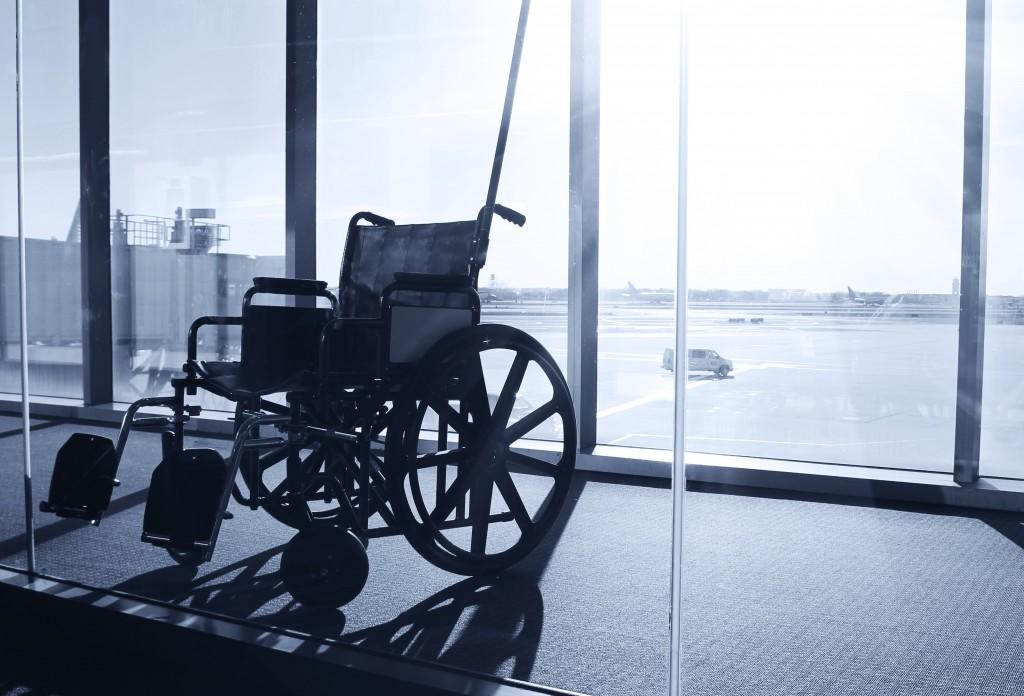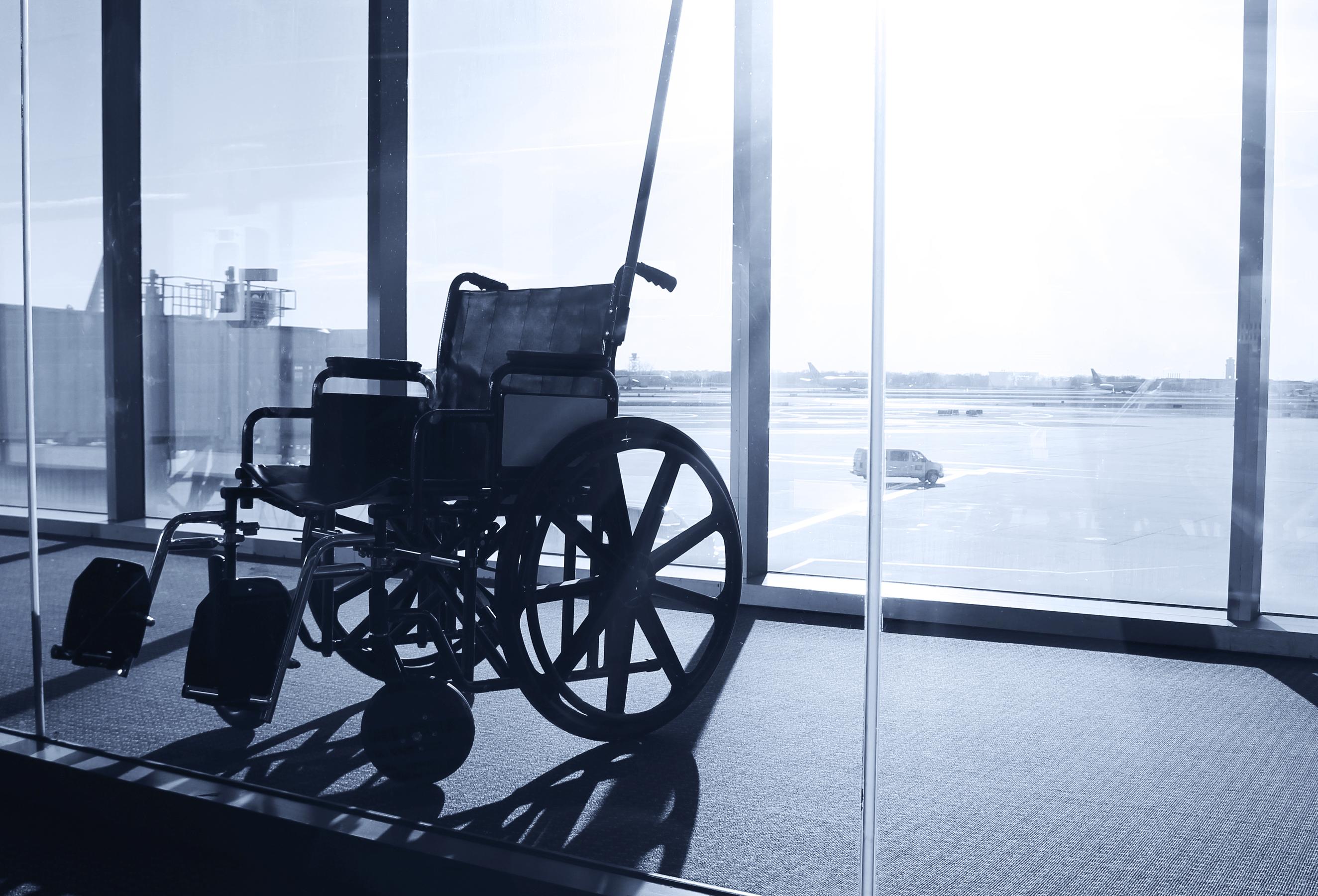Study Concludes Airlines Could Transport Mobility Devices (For a Price)

Wheelchair Service in Airport Terminal. Window View with Sunlight.
As passengers needing mobility aids contend with airlines over access rights, a new study suggests that the only barriers in transportation are available seats. Research published by the National Academy of Sciences concluded that removing two rows of seats on Airbus A320 and Boeing 737 family aircraft could be enough to successfully transport most devices.
For travelers requiring mobility aids, flying can be a difficult proposition. In November 2020, American Airlines was in the center of the controversy when they reportedly denied a traveler because of the weight of his wheelchair. In May 2021, Delta Air Lines was accused of destroying another flyer’s device on TikTok, which caught the attention of the International Air Travel Association.
However, the easiest solution to this problem could be removing two rows of seats on most U.S. domestic aircraft. A new study published by the National Academy of Sciences suggests the only barrier for accessible travel is cabin configurations.
Removing Two Rows of Seats Could Provide Clearance for Most Wheelchairs
The study was commissioned by the U.S. Access Board at the request of Congress, as part of the Federal Aviation Administration Reauthorization Act of 2018. The research committee, consisting of design leaders, former airline managers and professors from six universities, concluded there was a very easy solution for most devices and airlines.
On the two most common U.S. domestic aircraft – the Airbus A320 family and Boeing 737 family – the main boarding door is wide enough to allow most mobility aids through. Although the committee admitted it was not possible to research every carrier’s interior design, they noted “modest interior modifications” would be required to create a storage space.
To accommodate wheelchairs aboard airplanes, most carriers would need to remove two rows of seats near the main boarding door. Even with the heaviest mobility aids, taking out six seats could provide easier access for all flyers.
“The removal of two successive rows of seats in most airplanes should free up enough airplane floor structure to accommodate the load imparted by the heaviest of occupied power wheelchairs,” the researchers write. “Using load distribution systems that are commonly employed for seat assembly attachments, including pallet systems.”
If airlines were willing to make the move, it could solve two goals. First, it would make air carriers fully compliant with civil rights protections for all flyers. Second, the space would be enough to ensure other passengers are not at risk of serious head or leg injuries in the event of a survivable crash.
Research Suggestions May Not Fly With Airlines
Although the research is simply a suggestion at this time, a full mandate may not be welcome by the airlines. Removing two rows would cut into their operating revenue yield per available seat mile at a time when airlines are enduring historic losses. The study did not consider the possible revenue loss that could be incurred by air carriers.























So this idea will never get off the ground. Almost nobody will want to pay the real cost of transporting their mobility device. Nobody else will want to pay more to fund the cost of flying someone else's device . Most of all no airline wants to rip out two or three rows of seats that on even an average day they would sell for at least part of the aircraft's flight legs. So who paid how much for this study?
coach: You came to post that? That's not really the topic, is it - like at all? BFP: You're probably right. Overall, airlines may eventually have to make modifications but I'll also say that most people with extreme medical conditions generally don't fly commercial because they require a higher level of care in the first place - and it's definitely not a positive health factor to be tens of thousands of feet in the sky when it comes to blood circulation, breathing, etc.
Good - don't. We don't miss you.
I haven’t flown since the mask nonsense
I suspect the real solution the airlines use will be to shove the first two rows back into the knees of the rest of the airplane and keep the same number of seats.